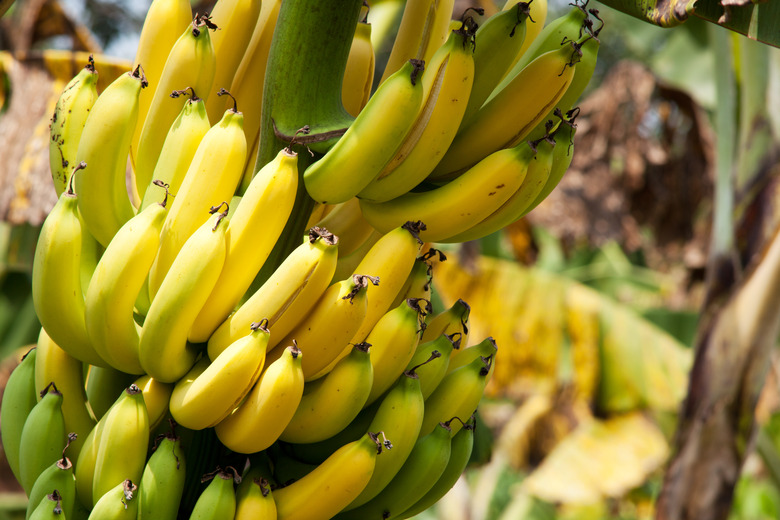The World's Banana Population Could Be Wiped Out By A Fungus
In a few years, the banana you know could be gone for good.
There's a good chance that every single banana you've ever had in your life has been the same, genetically speaking. Whether it came to you via your local supermarket or your school lunch tray, super ripe or still a bit green, big or small, it was almost certainly the Cavendish banana.
Now, though, a deadly fungus is threatening to wipe out the entire strain of Cavendish bananas. Known as the Fusarium fungus, it's been going after bananas in Asia and Australia for years. But the majority of the world's bananas are produced in Latin America, and at the beginning of this month, scientists confirmed that Fusarium finally hit Colombia.
The country declared a national emergency. Cavendish bananas are Colombia's third-largest agricultural export, and the country is doing everything it can to stop the spread. Scientists tried to quarantine the area where the fungus first spread. But researchers fear it has gotten past that zone, and is a threat to the entire Cavendish crop.
What Happens Now?
What Happens Now?
Fusarium spreads slowly, so don't panic and start hoarding bananas. Over time, the fungus causes plants to wilt and die.
But that slow spread is also what makes this particular strain of the Fusarium fungus, TR4, so difficult to manage. There are no fungicides to kill it, and it can be nearly impossible to eradicate even after containment, because it can linger in soil for as many as 30 years.
Ecuador, which neighbors Colombia, is trying hard to fight off the fungus, but that's a difficult task considering something as simple as the soil in a farmer's truck tires can contribute to the spread. Still, the country is trying any preventive measures it can, since the Cavendish crops bring $2.6 billion in export money to the country, and is responsible for **2.5 million jobs.**
Backup Banana?
Backup Banana?
Most experts agree that eventually, farmers may have to come together and find a backup banana. Many global diets include the banana as a staple item, and farmers across Latin America depend on its production.
Amazingly, the Cavendish actually was a backup, back in the 1950s. Before then, the world's favorite banana was the Gros Michel, but a fungus all but wiped that one out, too. You know how when you eat banana-flavored candy like the yellow Runts or Laffy Taffy, it tastes absolutely nothing like a banana? Some people believe that's because that flavor is based on the sweeter taste of the Gros Michel, although no one really knows for sure.
There's no leading contender in the backup banana competition so far. Some scientists believe they may be able to genetically engineer a Cavendish 2.0 that is immune to this strain of Fusarium, though that could lead to a crop that's vulnerable to other disease.
There are also more than 1,000 varieties of bananas out there, though many are much more difficult to mass produce, have undesirable flavors or are more difficult to preserve on journeys around the world.
Whatever it ends up being, there's a good chance you'll be eating it. And if you're a pure Cavendish fan, enjoy them while you can.
Cite This Article
MLA
Dragani, Rachelle. "The World's Banana Population Could Be Wiped Out By A Fungus" sciencing.com, https://www.sciencing.com/the-worlds-banana-population-could-be-wiped-out-by-a-fungus-13721267/. 23 August 2019.
APA
Dragani, Rachelle. (2019, August 23). The World's Banana Population Could Be Wiped Out By A Fungus. sciencing.com. Retrieved from https://www.sciencing.com/the-worlds-banana-population-could-be-wiped-out-by-a-fungus-13721267/
Chicago
Dragani, Rachelle. The World's Banana Population Could Be Wiped Out By A Fungus last modified March 24, 2022. https://www.sciencing.com/the-worlds-banana-population-could-be-wiped-out-by-a-fungus-13721267/
